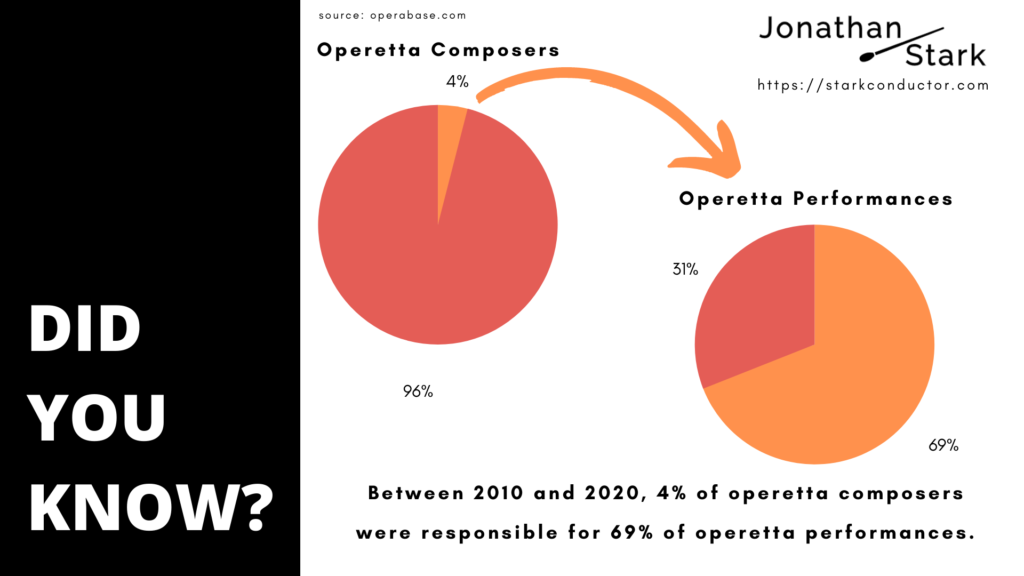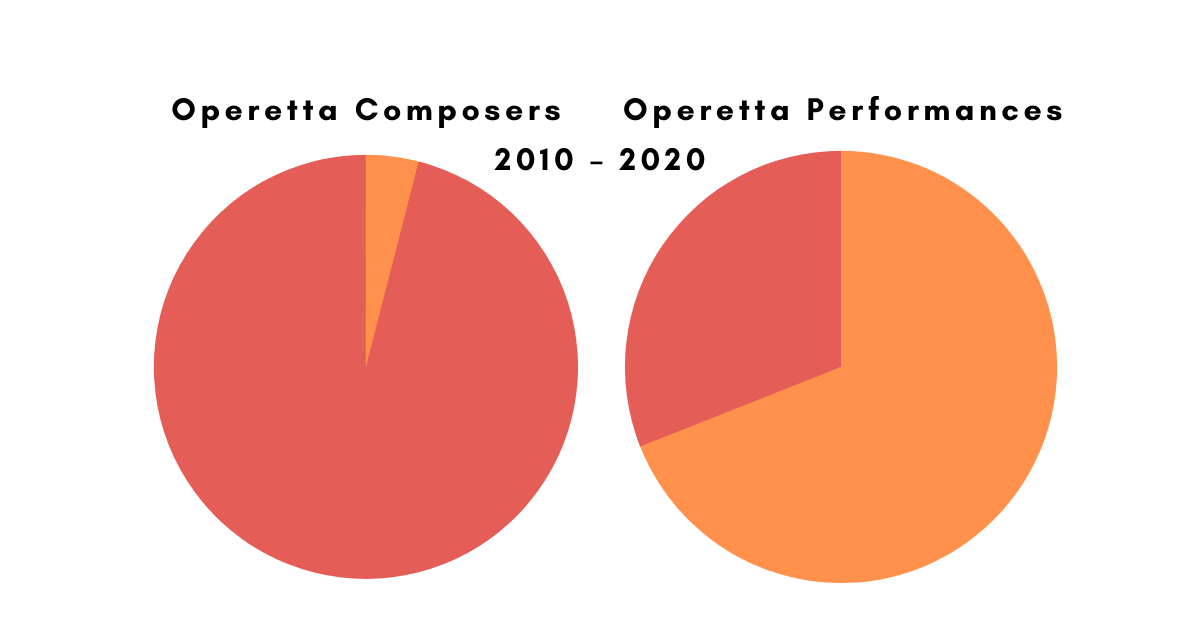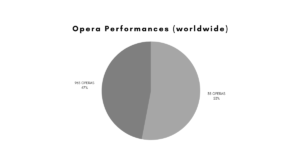Even if you are not a big operetta fan, the titles Die Fledermaus, Die lustige Witwe and Die Csárdásfürstin might be familiar to you. Do you also know the operetta composers? They are Strauss, Lehár and Kálmán. Together with another colleague – Offenbach – these operetta composers are responsible for the core operetta repertoire.
What you will read in this article:
Even though the year 2020 is not quite over yet, in this blog article I would like to take a look back on the time period 2010 – 2020, with special attention to the operetta: Which operetta composers and titles were played most often?
Operetta repertoire even more consolidated than opera repertoire
Already a few weeks ago I took a look at the opera repertoire of the 2019/20 season and found that the opera repertoire is very consolidated. Can this consolidation also be observed in the operetta genre?
The clear answer: Yes – and even more. Between 2010 and 2020 4% of the operetta composers were responsible for 69% of the operetta performances – almost unbelievable.

The "big four" operetta composers
Before all other operetta composers, the “big four” dominate the repertoire: Johann Strauss (son), Franz Lehár, Emmerich Kálmán and Jacques Offenbach. With their fame, these four gentlemen outshine dozens of other operetta composers who lead a shadowy existence. Not even ten years after Johann Strauss’ death, a theater in Vienna was named after him.
How operetta composers became famous: one "bull's eye" is enough
The following situation is even more delicate: In the “big three” (Strauss, Lehár, Kálmán) only one piece is responsible for the resounding success. Between 2010 and 2020, there were a total of 5595 operetta performances of works by Johann Strauss, of which 4020 alone were for Die Fledermaus.
Exaggeratedly formulated: Johann Strauss owes his reputation as an operetta composer to over 70% to the Fledermaus (important to remember: Strauss was by no means a pure operetta composer, but achieved fame primarily through dance music – he is also called the “King of Waltz”).
Lehár and Kálmán have a similar situation: Of 3634 Lehár performances, 2337 (64 percent) were of Die lustige Witwe, and Kálmán landed his bull’s eye with Die Csárdásfürstin, which accounted for 1717 (51 percent) of the 3353 Kálmán performances.
The distribution is more differentiated in the case of Jacques Offenbach: here, no clear “hit” can be identified, at least not one that can be compared to the fame of Die Fledermaus or Die Csárdásfürstin. Instead, the 2805 Offenbach performances between 2010 and 2020 were distributed among several different works.
What does this mean for conductors?
From a practical point of view, we conductors should probably take a pretty clear call from the statistics: It is highly recommended to have Die Fledermaus, Die lustige Witwe and Die Csárdásfürstin in our repertoire. Together with one or two additional Strauss operettas and possibly Ralph Benatzky’s Im weißen Rößl (1013 performances between 2010 and 2020), a solid foundation can be built up in the operetta repertoire.

Jonathan Stark – Conductor
Hello! I'm Jonathan Stark. As a conductor, it is important to me that visits to concerts and operas leave a lasting impression on the audience. Background knowledge helps to achieve this. That's why I blog here about key works of classical music, about composers, about opera and much more that happens in the exciting world of music.







Wie immer ein toller Beitrag!
Das freut mich! 🙂